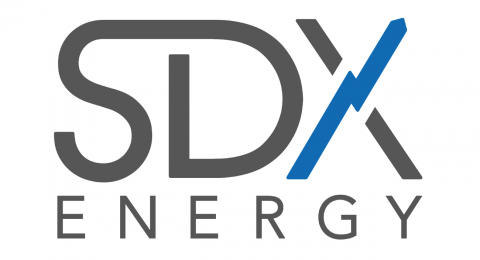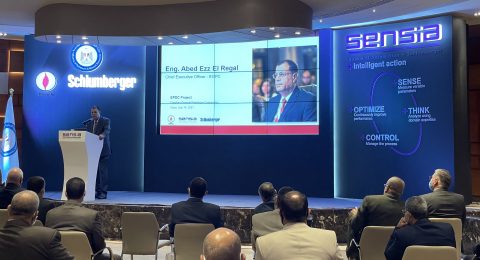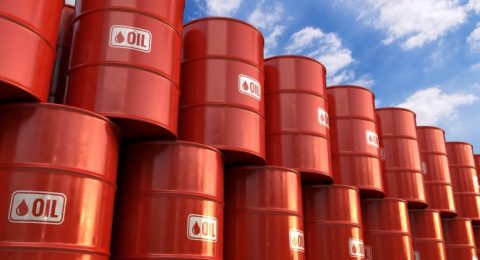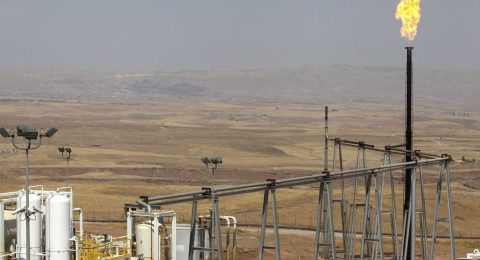Gulfsands Petroleum plc, the AIM listed oil and gas production, exploration and development company with activities in Syria, Iraq, Tunisia, Italy and the U.S.A., provides an update on operations in Syria.
Operations have recently been completed on the Khurbet East 101 ("KHE-101") appraisal well. The well has been suspended as a potential future oil production well following a drill-stem test ("DST") that achieved a potentially commercial stabilized flow rate of 447 barrels of oil per day ("bopd") of 34 deg API oil from the Triassic aged Butmah Formation reservoir.
KHE-101 commenced drilling operations on 19th January 2011 utilising the Crosco E-501 rig. The well was planned to be drilled to a total depth of 3200 metres in order to provide information on reservoir continuity as well as volume and type of hydrocarbons within two specific targets, the Butmah and Kurrachine Dolomite Triassic aged reservoirs. These reservoirs had been found to be hydrocarbon bearing in the original Khurbet East field discovery well ("KHE-1") in which the Kurrachine Dolomite reservoir flowed oil to surface on DST whilst the Butmah reservoir was found to be gas bearing. The KHE-101 well was drilled in a location that is structurally down dip and approximately 1.3 km south east of KHE-1 in order to evaluate the possibility of an oil column below the gas accumulation found within the Butmah Formation at KHE-1.
The well encountered the Triassic Butmah Formation at 2866 metres Measured Depth ("m MD"), 2456 metres True Vertical Depth sub-sea ("m TVD ss"), and encountered a gross vertical oil column of 69 metres with a net to gross ratio of approximately 35% and average porosity of 21% based on preliminary interpreted wireline logs. Pressure data obtained via wireline sampling from this oil column in the KHE-101 well-bore indicates that the reservoir is in communication with the gas cap, indicating reservoir continuity between the two well locations.
An open-hole DST was performed over a 32 metre gross interval between 2866 and 2898m MD. A stable flow rate of 447 bopd of 34 deg API oil was recorded on a 48/64" choke over an 11 hour period with average water content of 0.3% by volume, an average gas-oil ratio of 1839 cubic feet per barrel, at an average flowing wellhead pressure of 185 pounds per square inch. Subsequent interpretation of down hole gauge pressure data suggests that the reservoir has suffered significant formation damage through the drilling and evaluation operations, and would be capable of a flow rate of over 1000 bopd were all of the damage to be removed via future acid stimulation of the reservoir interval.
Preliminary, probabilistic in-house analysis suggests that the Khurbet East Triassic Butmah reservoir contains a Mean gross recoverable oil resource in the order of 15 million stock tank barrels ("MMstb"). The well has been suspended as a potential future producer and Government approval will now be sought to develop this reservoir within the Khurbet East field area.
Following completion of testing operations on the Butmah reservoir, the well was drilled ahead to the Kurrachine Dolomite, which was encountered at 3138m MD (2728m TVD ss). Upon drilling ahead, strong oil shows were detected and coring operations were undertaken from 3138m to 3193m MD (2806m to 2783m TVD ss ). Following coring operations, the well was drilled to a total depth of 3216m MD (2806m TVD ss). Based on wireline log interpretation, a net oil column of 6 metres was assessed for the Kurrachine Dolomite reservoir.
An open-hole DST was conducted over the interval 3138-3213m MD within the Kurrachine Dolomite reservoir, but only minor amounts of oil, gas and formation water were recovered. The lack of flow is believed to be due to relatively few natural fractures being present within the Kurrachine Dolomite reservoir section, compared to those found in this interval at the KHE-1 location.
The Crosco E-501 rig will now be moved to the Yousefieh 7 ("Yous-7") well location on the northern flank of the Yousefieh field. This well is located approximately 400 metres north of the horizontal production well Yous-4H which is currently producing 1330 bopd and is the most prolific well on the field. The Yous-7 vertical well will provide information on reservoir extent and quality of the undrilled northern flank in anticipation that it will be tied-back for production.
Gulfsands drilling operations in Syria Block 26, using the Crosco E-401 and E-501 drilling rigs, are continuing as planned and have continued without interruption during recent months. Drilling operations on Abu Ghazal are ongoing and will be the subject of a future news release.
Block 26 Oil Production
Oil production and revenue receipts from the Khurbet East and Yousefieh fields continue without interruption. Both fields demonstrate continued strong performance with limited reservoir pressure loss and minimal production of formation water. Daily average oil production from Khurbet East during April 2011 was approximately 18,000 bopd, which is at or near the maximum possible based on current surface facility capacity. Daily average production at the Yousefieh Field during April 2011 was approximately 2,700 bopd.
We expect that combined production from these fields will be increased to approximately 24,000 bopd by the end of 2011 with the drilling and tie-in of additional development and delineation wells, and via minor upgrades and de-bottle necking of existing surface facilities.
(Source: OilVoice)











